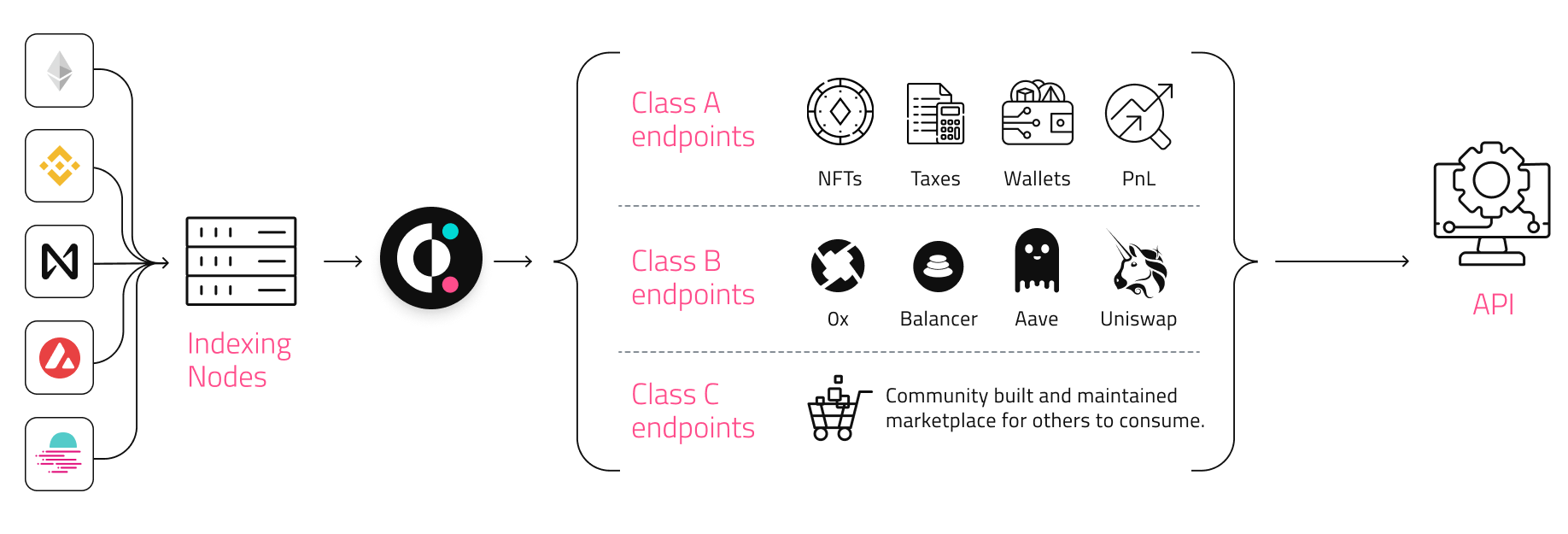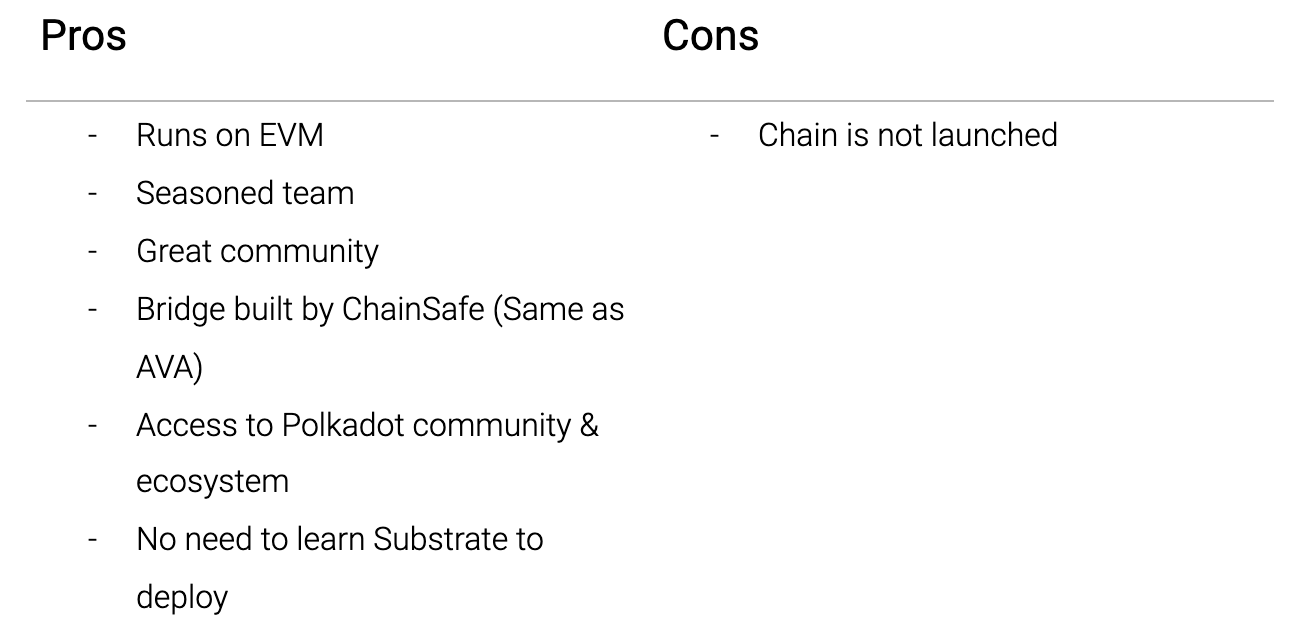Following months of research by the Covalent team - we are delighted to announce that the decentralized Covalent Network is going to live on the Moonbeam network. Moonbeam is an Ethereum-compatible smart contract parachain on Polkadot.
The following describes our thought process and decision matrix on how we made the decision to build on Moonbeam.
TL;DR
- Covalent Network is going to live on Moonbeam
- It was a decision made after three months of research
- For more context on how this decision was made, read my prior blog post “Which Blockchain is Best for you” published on Coin Market Cap.
- Covalent will be indexing both Moonbeam and Moonriver parachains
As the multi-chain future becomes a reality, keeping the centralized database has proven to be a technical and regulatory challenge. The technical architecture has escalated in complexity from a one-sided market to a multi-sided market where the supply of data comes from multiple public blockchains and private data and the demand is from the diverse uses-cases we support. The Covalent database is currently hundreds of billions of rows of data and takes up terabytes of storage space. And that's quickly growing with all the traction these blockchains are seeing.
Much of the decision-making process or criteria evaluated were done so in “Which Blockchain is Best for you” (published on Coin Market Cap) from a deep dive perspective.
Why We are Decentralizing
The future-proof architecture is to migrate to a globally distributed data store that uses crypto-economic primitives to keep the network running. A single point of failure via Covalent no longer suffices.

From Covalent’s perspective, which has been primarily built on Ethereum which resulted in knowledge of the EVM, it would be natural for us to settle the index and query payloads on Ethereum. Of course, a variety of reasons make Ethereum impractical. Our architecture requires queries to be settled as micro-transactions. This would be prohibitive in terms of gas fees.

Our Evaluation Criteria for Choosing the Right Blockchain for the Settlement Layer
- General: What is interesting, new, different?
- Ecosystem: Who else is there, and who else is coming, and what initiatives are being taken to increase adoption of the chain?
- Technical: How much heavy lifting will need to be done, and what type of knowledge base is required to launch something based on the current skill set of the team?
- Support: What type of support is available, and what does it look like from a technical and non-technical perspective?
- Grants: Is there funding available to allow us to cover the costs to enter these ecosystems?
Although all of these were important for evaluation there were a few specific items that made us give greater consideration to the chain.
Each one of these categories had various questions which we then tied to an internal rating system to better quantify our decisions on how we valued each response for our business. The one that was not listed is culture. This is something that is really difficult to quantify, but you know it when you feel it.
While Covalent could have gone with the candidate who offered the largest grant, this was never an option and we suggest following this route. Grants are nice and possibly necessary, but are trumped by vision, technology and a great team. Other key considerations were not immediately obvious but were revealed as the due diligence process began.
Here are some additional decision points (you will recognize some of these) which are more specific to Covalent’s business:
- EVM bridge / EVM compatible
- Live dApps that can be indexed
- Demand (impending demand) for data
- Vibrant community
Polkadot
Polkadot, which has one of the largest communities of the blockchains evaluated, was at the top of our list, and outside of the lack of us knowing Substrate (Polkadot’s developer language) was the winner.
The issue here is that the initial thought was Polkadot would require us to build our own parachain (custom blockchain in Polkadot lingo), or deploy our solution on an already-built parachain. Building a blockchain is not something we have any interest in doing, and is completely out of our core competency, given deadlines and previous requirements.
This brought us back to the beginning for a short period of time until we met the team at Moonbeam, where after just two calls it was clear that this was the best decision. In brief, Moonbeam is both compatible and interoperable with Ethereum. It greatly simplifies the development of Polkadot-based blockchain applications as compared to implementing a full parachain or parathread which we have made a decision will be the network of choice as the settlement layer for the Covalent network.
Moonbeam

Conclusion
We are very excited to be part of the Moonbeam family, and have welcomed them into our home. This was not an easy process and has been fraught with difficult decisions and tradeoffs.
In addition to using Moonbeam as the settlement layer for the Covalent Network we will also be providing a full indexing solution for both Moonbeam and Moonriver. Anyone looking to query on chain data in the exact ways provided to other chains noted in the knowledge base.
Although we are happy with our decision we advise each company building on a public blockchain to evaluate what is best for their business as no two projects are the same.
Stay tuned for more about token specifics.
About Moonbeam
Moonbeam is an Ethereum-compatible smart contract platform on the Polkadot network that makes it easy to build natively interoperable applications. This Ethereum compatibility allows developers to deploy existing Solidity smart contracts and DApp frontends to Moonbeam with minimal changes. As a parachain on the Polkadot network, Moonbeam will benefit from the shared security of the Polkadot relay chain and integrations with other chains that are connected to Polkadot. Currently, in active development by PureStake, Moonbeam is expected to reach MainNet by mid-2021. Learn more: https://moonbeam.network/